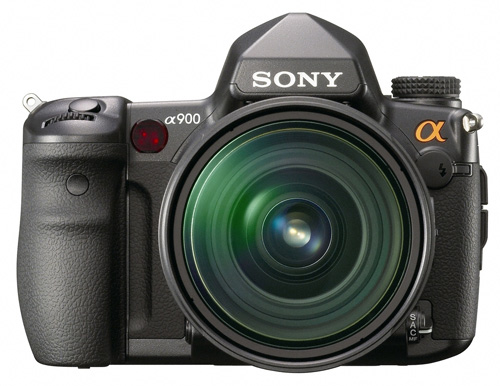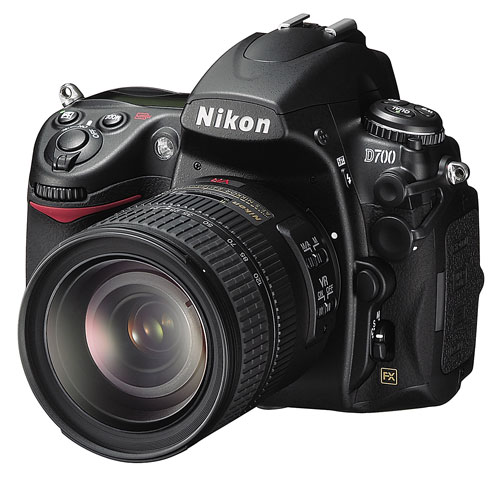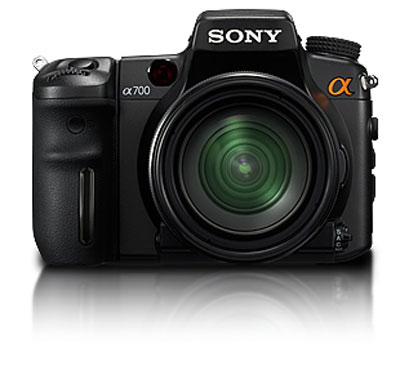Sony A900: A Closer Look at 24.6MP Resolution and Noise
by Wesley Fink on October 27, 2008 2:00 AM EST- Posted in
- Digital Camera
When we published the Sony A900 Full-Frame: Hands-On Preview several weeks ago, the excitement about the world's highest resolution full-frame DSLR was evident in every photography forum you could find on the web. It was not as if the new Sony flagship model was a surprise, because the specifications had been detailed in broad strokes in the year since Sony announced the development of a 24.6MP 24x36mm full-frame sensor. The launch just filled in the blanks with details and answered questions like whether Sony could get their body Image Stabilization to work on a full-frame. The answer was yes they could.
Just as quickly everyone began wondering whether that huge 24.6MP sensor would be any good at low-light high ISO photography, which had risen to the full-frame forefront with the Nikon D3 and D700. The Nikon's are half the 24.6 MP resolution, but with a standard range to ISO 6400 and extensions to a staggering 25600. Everyone wondered whether the Sony A900 could compete with Nikon's full-frame, designed for "available darkness" as some liked to tease.

Fortunately, it was not a long wait until we could buy a Sony A900, and with a production model in hand some of the questions can begin to be explored. It has already been clearly established in every review that the Sony A900 is the highest resolution full-frame that you can buy - even out-resolving the $8000 Canon 1DS Mark III with a 21.6MP sensor. That resolution performance is amazing when you consider the 24.6MP Sony A900 is just $3000, and it gives studio photographers a new choice - since they normally work in the A900 sweet range, which is broadly acknowledged to be ISO 100-800.

What is not as clear is how suitable the Sony A900 is for action photographers. The A900 features dual Sony BIONZ processors and it features a real 5 FPS speed, which most consider remarkably fast for a full-frame DSLR with 24.6MP resolution. The A900 also features the first body-integrated IS system in a full-frame camera. Sony SteadyShot is said to be capable of improving hand-held shooting by 2 to 4 stops depending on the lens. Most important is that SteadyShot is available and works with any lens that you mount on the Sony A900. This is particularly important in very large aperture lenses, which are often prohibitively expensive for optical OS since such huge elements have to be compensated.
With 5 FPS burst speed and always available IS, the A900 on the surface appears a good choice for action and sports. However, a sensor that is too noisy at high ISO could limit the usefulness of the A900 in action shooting.


That is the reason for these tests - to look more closely at noise of the A900 sensor. Noise will be compared to the Nikon D700 and Canon 5D, which are the only full-frame DSLRs you can currently buy other than the A900. Canon has announced the 5D Mark II but that camera is not yet shipping and is not expected in the market until late November.

With the announcement of the A900 Sony also announced an update to firmware Version 4 for the 12.3MP Sony A700 that incorporates all they learned in developing the A900. Our final noise comparison will be the Sony A700 to the full-frame A900.










45 Comments
View All Comments
Wesley Fink - Monday, October 27, 2008 - link
We plan to begin using another target in our full-frame DSLR roundup to come when th 5D Mk II is finally shipping. There is already a huge database of "component boxes" test shots and it makes more sense to make a change when you can provide a group using the new setup.Cameras that are reviewed do not stay in our possesion forever, so it really isn't always possible to reshoot models that were tested in earlier reviews. At present we buy all the models reviewed on the open market and resell them soon after the review is completed.
haplo602 - Monday, October 27, 2008 - link
Actualy they can't because they want to be different. there's a reason why you find NR/high ISO test done on a color checker chart on the other sites, while you get a 3 color (ok black, white and green) on AT.Using a color checker chart would be too mainstream it seems ...
xsilver - Monday, October 27, 2008 - link
odd also that more wasnt mentioned about the actual revolutionary things about the a9001) dual bionz chip allowing 24mp images at 5fps
2) in body IS for a FF sensor (first)
Wesley Fink - Monday, October 27, 2008 - link
We chose not to republish our preview as part of the final review as some other sites do. However the hands-on preview is linked in the first sentence of the review. The points you make are covered in detail earlier in that article. We also mention both points in this review but we did not go into detail about them again.If enough readers want it we can include the preview information again in the final review. Some important cameras, like the A900, tend to generate a series of articles exploring different aspects of the camera.
xsilver - Tuesday, October 28, 2008 - link
I think a field test of the IS system would be goodeg. 70-200mm canon USM IS vs sony 70-200mm with body IS
which is better? how many stops exactly.
maybe also a test with something wide like a 35/50mm
I think just repeating what they are is not much of a test.
For the fps test, you could run it through some different memory cards and see if the write speed is affected.